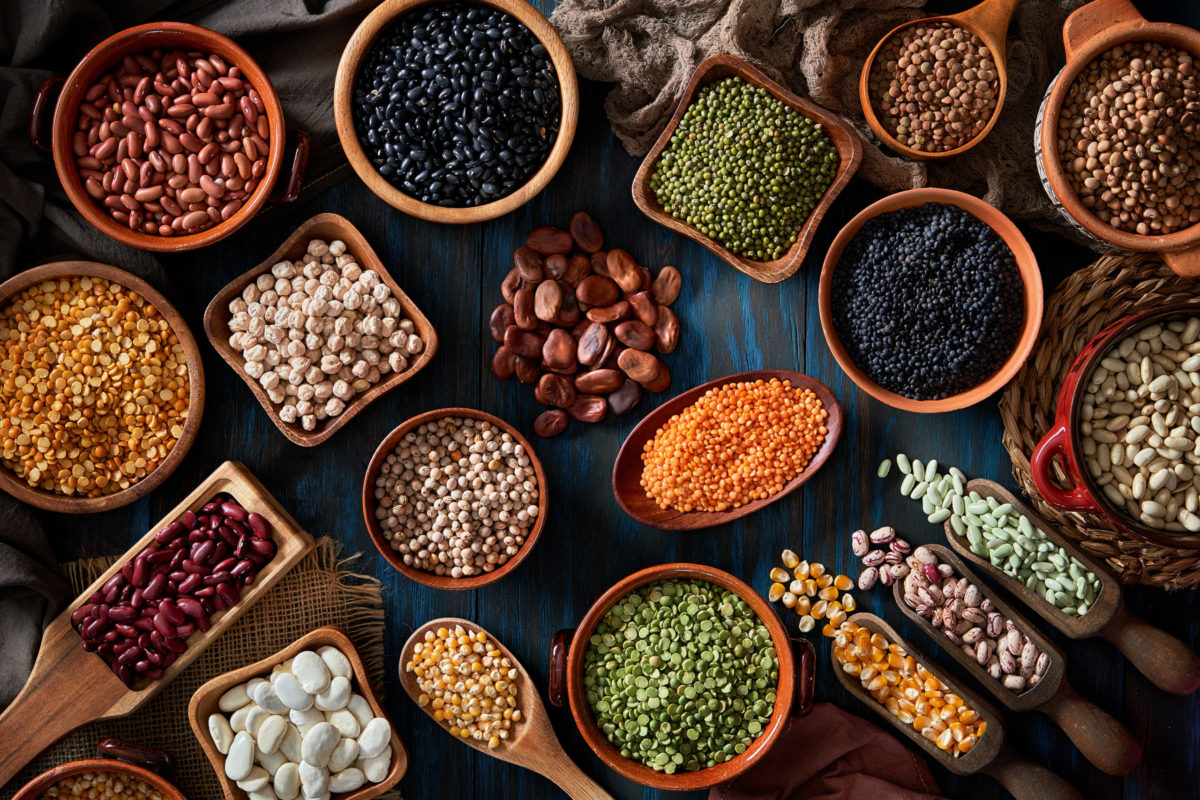Want to eat healthier without spending a lot of money? Try adding legumes to your diet.
You’ll never run out of options, either, since there are more than 16,000 types of legumes grown around the world. Beans, peas, lentils, peanuts: they’re all legumes. Legumes offer you versatility and a long list of health benefits. No wonder that they’re considered a superfood.
WellTuned spoke with Sarah Provence, a registered dietitian nutritionist educator with BlueCross BlueShield of Tennessee, to understand all the reasons you should try legumes.
Health benefits of legumes
Sarah Provence: Only about 8% of adults in the U.S. report eating legumes on any given day. If you’re not one of them, consider all the great reasons to add beans, peas, and lentils to your diet. Legumes pack quite a nutritional punch. Plus they can help you vary your diet and keep things interesting.
Legumes are high in multiple nutrients. Legumes provide a long list of nutrients, including:
- Iron
- folate
- B vitamins
- calcium
- potassium
- phosphorus
- copper
- magnesium
- manganese
- zinc
Additionally, most are low in fat and cholesterol free.
Legumes are high in fiber. Add lentils to your diet to boost your fiber intake, which can help you fight heart disease and colorectal cancer, lower your cholesterol, and even keep your digestive system moving regularly. A few great high-fiber legumes to try include:
- lentils
- split peas
- black beans
- garbanzo beans (also known as chickpeas)
Just a half-cup of split peas or lentils contains 8 grams of fiber, and one cup of cooked black beans will provide 15 grams of fiber. This is more than half the recommended daily amount for adults.
Legumes provide a punch of protein. One serving, or about a half-cup of legumes, contains about 8 grams of protein and only 1 gram of fat.
Legumes are a key part of a plant-based diet. Legumes can be a great substitute for meat in a dish. If you’re trying to embrace a more plant-based diet or a heart-healthy diet like the Mediterranean diet or the Dietary Approaches to Stop Hypertension (DASH) eating plan, give legumes a try.
Legumes can ward off unnecessary snacking. Because they are high in fiber and protein, legumes fill you up for a longer period of time. This reduces the likelihood that you’ll start quickly craving high-calorie snacks.
Other benefits of legumes
Sarah Provence: Legumes are a great addition to a well-balanced diet. But they have other benefits, as well.
Legumes won’t strain your budget. You can choose between bags of dried legumes or canned legumes at the supermarket. Both options are relatively inexpensive, especially when compared to the price of meat today. Plus, they’re easy to keep in your pantry and will last for a long time. You can also buy frozen legumes, which also keep for longer periods of time.
Legumes offer diversity. You may prefer one type of bean or pea over another. You may be a big peanut fan. Or you may love lentils best. You have lots of options, which also gives you lots of different opportunities for incorporating them into your meals.
How to add legumes to your diet
Sarah Provence: Ready to give legumes a try? First, decide if you want to use dried legumes or canned legumes. You will need to soak dried legumes for a few hours—or possibly even overnight—before you can cook with them. By contrast, canned legumes are more convenient because you don’t need to soak them first. However, canned beans and peas can contain some extra sodium that you might not want or need. Look for cans with a “low sodium” label, or drain and rinse canned legumes before you use them.
A few ideas to try:
- Roast some garbanzo beans and add them to a green salad
- Add black beans to cheese quesadillas
- Make lentil soup or add lentils to another soup or stew to thicken it up
- Puree white beans and use them as a base for a dip or a spread
- Top whole-grain crackers with two tablespoons of peanut butter
- Combine black-eyed peas with diced onion, tomato, and red bell pepper, for a delicious salad
- Add kidney beans, navy beans, or lima beans to jazz up a basic vegetable soup
- Make veggie burgers with black beans
- Toss a few roasted peanuts on top of a stir fry or salad for a little extra flavor—and crunch!
Final considerations
Sarah Provence: Beans are famous for causing gas, which causes some people to avoid them. One way to ward off that problem is to soak dried beans overnight, drain and rinse the beans, discard the soaking water, and cook the beans in fresh water. This should help to alleviate the problem.
You can also slowly increase the amount of legumes that you’re adding to your diet. The Dietary Guidelines for Americans, 2020-2025 suggests that you aim for eating about 1.5 cups of beans, peas, and lentils per week. If you ramp up too quickly, you may find yourself experiencing some gas or even some constipation. So you might want to start with smaller amounts and build from there. Drink extra water, too.
Also, if you have diabetes or kidney disease, talk to your doctor about how legumes can fit into your meal plan. Because legumes tend to be high in carbohydrates, phosphorous, and potassium, some people with diabetes or kidney disease may need to be careful with how much of this type of food they consume.
More from Sarah Provence on WellTuned.
Get more information about specific health terms, topics and conditions to better manage your health on bcbst.com. BlueCross BlueShield of Tennessee members can access wellness-related discounts on fitness products, gym memberships, healthy eating and more through Blue365®. BCBST members can also find tools and resources to help improve health and well-being by logging into BlueAccess and going to the Managing Your Health tab.


